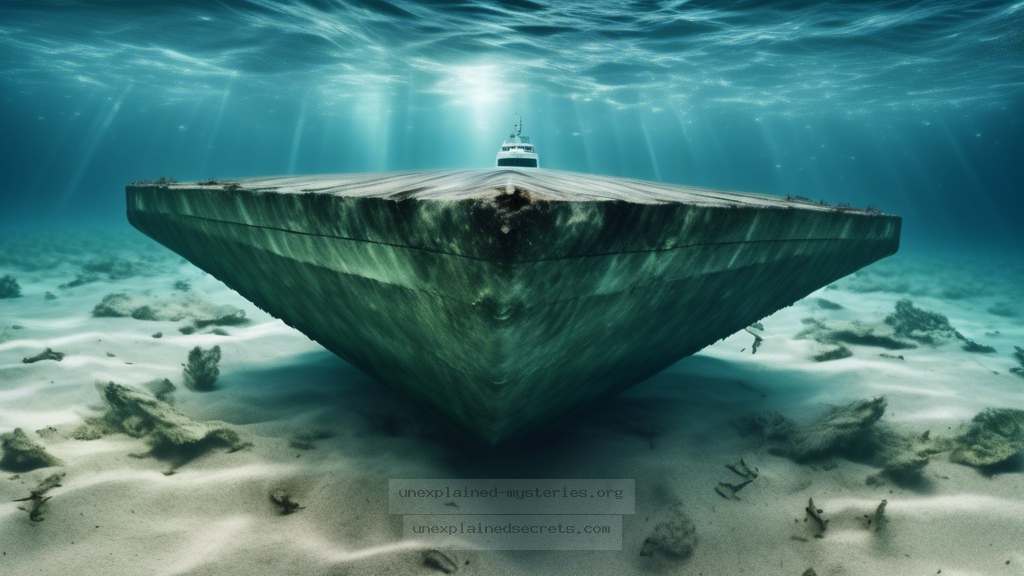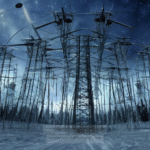What Secrets Lie Beneath the Waves of the Bermuda Triangle?
What Secrets Lie Beneath the Waves of the Bermuda Triangle?
The Bermuda Triangle has captivated the imagination of adventurers, scientists, and conspiracy theorists alike for decades. This region, marked by the points of Miami, Bermuda, and Puerto Rico, is infamous for the mysterious disappearances of ships and aircraft, leading many to question: what secrets lie beneath the waves of the Bermuda Triangle? In this blog post, we will delve into the various theories, historical accounts, and ongoing research surrounding this enigmatic area, seeking to uncover the truth behind its legends.
Historical Context: A Brief Overview of Disappearances
The Bermuda Triangle has a long history of incidents, with some of the earliest recorded disappearances dating back to the late 19th century. One of the most famous cases is that of the USS Cyclops, a Navy cargo ship that vanished without a trace in March 1918 while carrying a full load of manganese ore. Despite a massive search effort, no wreckage was ever found, and the ship’s disappearance remains a compelling mystery. Other notable cases include the disappearance of Flight 19, a squadron of five TBM Avenger torpedo bombers on a training flight in December 1945, and the subsequent loss of a rescue plane sent to find them.
These incidents contributed to the Triangle’s growing reputation as a perilous area, and many have since speculated about the possible causes. The combination of historical accounts and the sheer number of unexplained occurrences has solidified its status as one of the world’s great mysteries.
Core Concepts: Theories Behind the Bermuda Triangle
Numerous theories have emerged to explain the disappearances in the Bermuda Triangle. Some of the most prominent include:
- Natural Phenomena: Some scientists argue that the area is prone to severe weather conditions, such as hurricanes and waterspouts, which can lead to sudden and violent maritime disasters.
- Human Error: Navigational errors and mechanical failures are common in any oceanic region. The Triangle’s complex geography and unpredictable weather can contribute to human miscalculations.
- Magnetic Anomalies: Some researchers claim that magnetic anomalies in the area may interfere with navigational instruments, leading to confusion and misdirection.
- Underwater Canyons: The Bermuda Triangle is home to deep underwater canyons that may create powerful underwater currents, making it hazardous for vessels and aircraft.
- Paranormal Theories: Speculative theories suggest that extraterrestrial activity or portals to other dimensions may be responsible for the disappearances.
Documented Cases: Noteworthy Incidents
Several disappearances have become emblematic of the Bermuda Triangle’s mystery. Here are some of the most documented cases:
| Incident | Date | Details |
|---|---|---|
| USS Cyclops | March 1918 | A Navy cargo ship that vanished with 309 men aboard, never to be found. |
| Flight 19 | December 5, 1945 | A squadron of five bombers that lost navigational control and disappeared. A rescue plane sent after them also vanished. |
| SS Marine Sulphur Queen | February 1963 | A tanker ship that disappeared with its crew of 39 without sending any distress signals. |
| Star Tiger | January 30, 1948 | An airliner that vanished while flying from the Bahamas to London. No wreckage was ever found. |
Practical Implications: Navigational Challenges
The Bermuda Triangle poses real navigational challenges for vessels and aircraft operating in the area. The combination of unpredictable weather, strong currents, and geographic features makes it essential for those traveling through to exercise caution. Here are some best practices for safe navigation:
- Use updated navigational charts and equipment.
- Avoid traveling during storm season or when severe weather is predicted.
- Maintain regular communication with coast guard and other vessels.
- Have emergency protocols in place, including distress signal procedures.
Alternative Perspectives: Debunking the Myths
While the Bermuda Triangle has garnered a reputation for being a perilous region, many researchers argue that the statistics around disappearances are not as alarming as they seem. In fact, a significant number of the incidents can be attributed to natural causes or human error. For instance, a study conducted by the National Oceanic and Atmospheric Administration (NOAA) found that the number of incidents in the Bermuda Triangle is not disproportionately high compared to other heavily traveled regions of the world.
Additionally, the sensationalized stories and media portrayals of the Triangle have contributed to the mythos surrounding it. By dissecting these narratives, we can better understand the reality of the area rather than succumbing to sensationalism.
Common Misconceptions: What You Should Know
Many misconceptions surround the Bermuda Triangle that can lead to misunderstandings about its dangers. Here are a few of the most common myths:
- Myth: The Bermuda Triangle is the only area in the world where ships and planes disappear.
- Fact: Disappearances occur in many regions of the world, but the Bermuda Triangle has gained more media attention.
- Myth: The Bermuda Triangle is a “no-go” zone for travelers.
- Fact: Millions of vessels and aircraft traverse the area safely every year.
Investigative Approaches: How to Study the Bermuda Triangle
For those interested in investigating the Bermuda Triangle, a systematic approach is essential. Here are some best practices to follow:
- Gather reliable data from multiple sources, including historical accounts and scientific studies.
- Engage with experts in marine navigation, meteorology, and oceanography for insights.
- Utilize technology such as sonar and satellite imagery to explore underwater features.
- Participate in field studies or join expeditions to experience the area firsthand.
Future Developments: Ongoing Research and Exploration
As technology advances, researchers are continually seeking to uncover the mysteries of the Bermuda Triangle. With the advent of more sophisticated underwater exploration equipment, scientists are now able to study the ocean floor in unprecedented detail. In addition, advancements in meteorological technology allow for better forecasting of weather phenomena that could impact navigation in the area.
Moreover, researchers are increasingly applying data analytics and machine learning techniques to historical data, looking for patterns that may provide insight into past incidents. As our understanding of the ocean and atmospheric dynamics grows, we may be better equipped to decipher the enigma of the Bermuda Triangle.
Conclusion: Unraveling the Mystery
The Bermuda Triangle remains one of the most intriguing and controversial mysteries of our time. While numerous theories attempt to explain the inexplicable, many incidents can be attributed to natural phenomena and human error. Historical accounts provide a compelling backdrop for understanding the area, but sensationalism has often overshadowed the reality of the dangers faced by travelers. As research continues and technology evolves, we may one day find the answers to the secrets that lie beneath the waves of the Bermuda Triangle. Until then, it remains a captivating subject for exploration and speculation. 💡
Other Articles
Recent Posts
- What Happened to Flight MH370? The Conspiracy Theories That Still Haunt Us
- What Secrets Lurk Within the Walls of the Infamous Trans-Allegheny Lunatic Asylum?
- What Evidence Supports the Existence of Bigfoot in the Pacific Northwest?
- What Happened to the Indus Valley Civilization? Unraveling the Mysteries of Ancient Urban Life
- Can Telepathy Be Scientifically Proven Through Laboratory Evidence?







